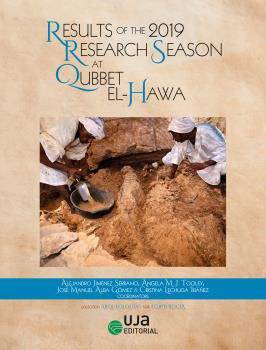
Door een staking bij bpost kan je online bestelling op dit moment iets langer onderweg zijn dan voorzien. Dringend iets nodig? Onze winkels ontvangen jou met open armen!
- Afhalen na 1 uur in een winkel met voorraad
- Gratis thuislevering in België vanaf € 30
- Ruim aanbod met 7 miljoen producten
Door een staking bij bpost kan je online bestelling op dit moment iets langer onderweg zijn dan voorzien. Dringend iets nodig? Onze winkels ontvangen jou met open armen!
- Afhalen na 1 uur in een winkel met voorraad
- Gratis thuislevering in België vanaf € 30
- Ruim aanbod met 7 miljoen producten
Zoeken
Omschrijving
The History of the necropolis of Qubbet el-Hawa, located in western Aswan (Egypt), is an extended one. The archaeological site was in use from c. 2500 BC to the Byzantine Period. It comprises many tombs, mostly of Old Kingdom to Middle Kingdom date, belonging to the highest and administrative elite of Elephantine, 1st Upper Egyptian Nome. This area played an important role in the ancient state, even though it was far away from the royal court, due to the exceptional nature of its border territory, its proximity to Lower Nubia, and the expeditions and the trade with other neighboring lands. The Qubbet el Hawa Project, led by the University of Jaén and with the collaboration of the MoTA, conducted its first field season in summer 2008. Since then, research works have been carried out by a multidisciplinary team. This volume presents and offers, to the wider scientific community, a larger range of papers concerning the preliminary results of the 2019 campaign (11thseason) and updates the fieldwork carried out during the past decade.
Specificaties
Betrokkenen
- Auteur(s):
- Uitgeverij:
Inhoud
- Aantal bladzijden:
- 216
- Taal:
- Engels
Eigenschappen
- Productcode (EAN):
- 9788491594420
- Verschijningsdatum:
- 13/01/2022
- Uitvoering:
- Hardcover
- Afmetingen:
- 19 mm x 25 mm
- Gewicht:
- 737 g

Alleen bij Standaard Boekhandel
+ 124 punten op je klantenkaart van Standaard Boekhandel
Beoordelingen
We publiceren alleen reviews die voldoen aan de voorwaarden voor reviews. Bekijk onze voorwaarden voor reviews.











